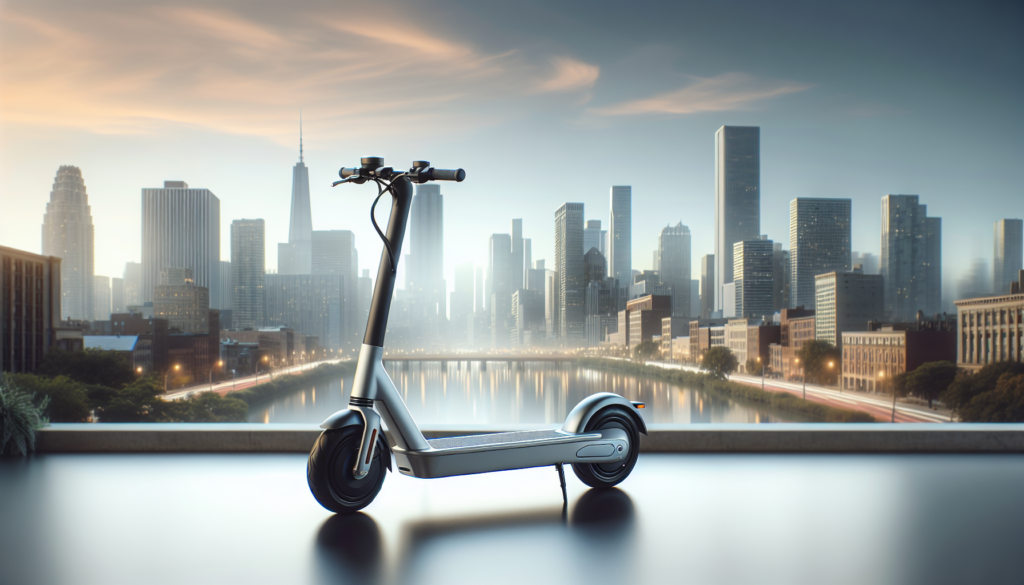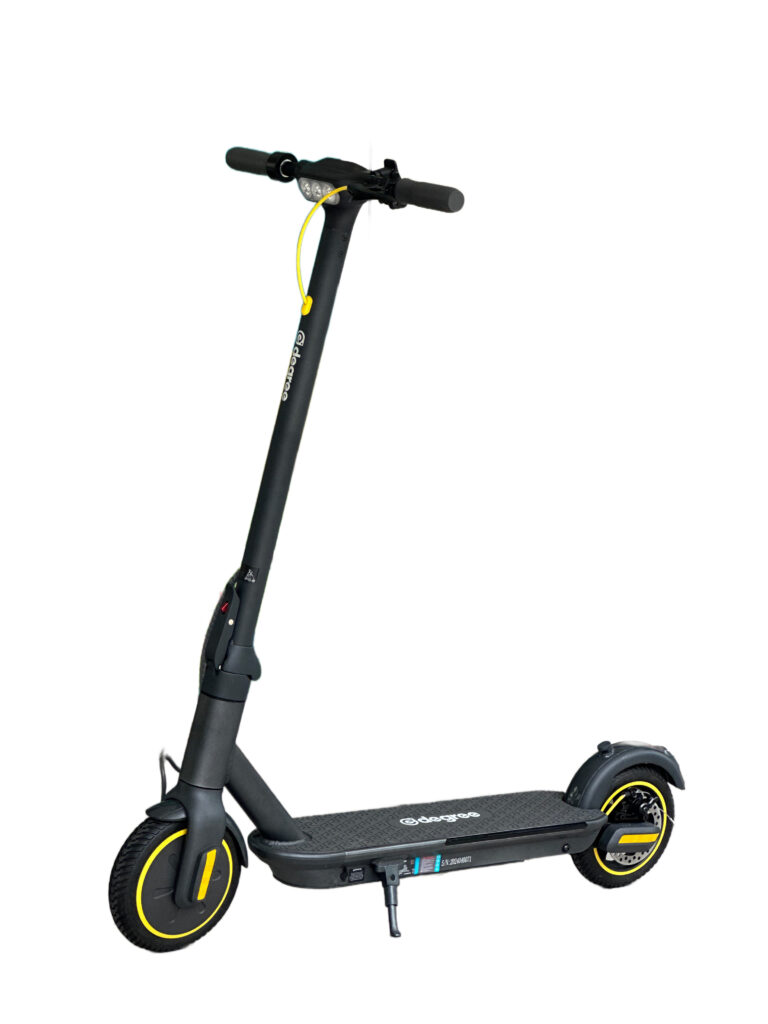As the popularity of electric scooters continues to rise, so does the debate surrounding the type of tires best suited for these eco-friendly vehicles. Specifically, riders often find themselves choosing between pneumatic tires, known for their cushioning capabilities, and solid tires, which offer durability without the risk of punctures. This blog will explore the key differences between the two tire types, highlighting models like the OEM Xiaomi Escooter, which boasts pneumatic tires, and the Eko Life eDegree CS1, equipped with solid tires. Each scooter’s performance, comfort, and user experience are influenced heavily by their tire type, leading to various pros and cons worth considering in your decision-making process.
Overview of Electric Scooter Tire Types
Electric scooters have become increasingly popular for urban commuting, and one of the crucial factors influencing their performance and comfort is the type of tires they use. Pneumatic tires, like those found on the OEM Xiaomi Escooter, are air-filled and offer several significant advantages. For instance, these tires provide excellent shock absorption, which can lead to a smoother ride over uneven surfaces. Weighing only 12kg and reaching speeds of up to 30KM/h, this scooter has a range of 25-35km, making it an efficient choice for short travels.
However, the drawback of pneumatic tires is that they can puncture and require more maintenance compared to solid tires. On the other hand, solid tires, like those used in the Eko Life eDegree CS1, are filled with rubber and do not require inflation, eliminating the risk of flats. With a weight of 14kg, a max speed of 25KM/h, and a range of about 35km, this scooter provides a robust alternative for riders seeking low-maintenance options. While solid tires might not offer the same level of shock absorption as pneumatic tires, they excel in durability. Each type has its pros and cons, and the choice ultimately depends on the rider’s needs and preferences in urban transport.

Benefits of Pneumatic Tires
When it comes to electric scooters, one of the most significant considerations is tire type, and pneumatic tires come with a range of benefits that set them apart. Pneumatic tires, designed with air-filled inner tubes, typically provide superior shock absorption and a smoother ride on uneven surfaces. For instance, the OEM Xiaomi Escooter, which weighs 12kg and boasts a max speed of 30KM/h, utilizes pneumatic tires that enhance comfort and stability, especially over bumps and rough terrains. Riders will appreciate the lower rolling resistance these tires provide, which not only results in an enjoyable ride but also improves overall efficiency, making them ideal for both urban commuting and leisurely trips.

Furthermore, the range of 25-35km offered by this model demonstrates the maintenance of performance, further underscoring the advantages of pneumatic tires in absorbing impacts and maintaining traction. On the flip side, pneumatic tires are not without their challenges. While they do offer a smooth ride, they can be prone to punctures and leaks, which might necessitate maintenance or replacements over time. In contrast, the Eko Life eDegree CS1 features solid tires, which eliminate the risk of flats entirely. However, this can come at the cost of comfort as solid tires tend to transmit more vibrations to the rider.
Ultimately, those seeking a blend of performance and comfort might find the pneumatic tires of scooters like the OEM Xiaomi Escooter to be the preferred choice, despite the need for occasional upkeeping.
Drawbacks of Pneumatic Tires
Pneumatic tires are often favored for their superior shock absorption and comfort compared to solid tires. However, they come with notable drawbacks that can affect your riding experience. One major downside is the risk of punctures and flats, which can lead to unexpected downtime and costly repairs. This vulnerability is particularly concerning for avid riders who rely on their electric scooters for daily commuting. Additionally, maintaining the correct PSI is essential to ensure optimal performance and safety, which can be seen as an inconvenience to some riders.
Moreover, pneumatic tires tend to require more maintenance and care than solid tires. The weight and construction of pneumatic tires can also result in slightly heavier overall scooter designs, impacting portability. For example, the OEM Xiaomi Escooter weighs 12kg with pneumatic tires while Eko Life eDegree CS1, with solid tires, weighs 14kg. While this difference may seem minor, for commuters who frequently carry their scooters, every kilogram counts. Overall, while pneumatic tires offer a smoother ride, the potential for flats and added maintenance should be carefully considered before making a purchase.
Advantages of Solid Tires
Solid tires are becoming increasingly popular in the electric scooter market, particularly due to their durability and low maintenance requirements. Unlike pneumatic tires, which are prone to punctures and require periodic inflation, solid tires offer a significant advantage by ensuring uninterrupted rides. The Eko Life eDegree CS1, for instance, utilizes solid tires, making it a reliable choice for urban commuters. The 14kg scooter provides a maximum speed of 25KM/h and an impressive range of 35km, allowing riders to navigate city streets effortlessly while minimizing downtime caused by tire-related issues. This reliability makes solid tires an ideal option for riders who desire a worry-free experience during their travels.
Additionally, solid tires tend to outperform pneumatic tires in terms of stability and provide consistent performance in various weather conditions. Because they do not lose air pressure, solid tires maintain their shape, ensuring better traction and control, especially on uneven surfaces. While they may not absorb shocks as effectively as pneumatic tires, the trade-off is a smoother and more predictable ride in many instances. Therefore, for urban riders looking for convenience and reliability in their electric scooters, investing in a model like the Eko Life eDegree CS1 with solid tires can be a smart decision in the competitive electric scooter market.

Disadvantages of Solid Tires
While solid tires offer certain advantages like puncture resistance and lower maintenance needs, they come with notable disadvantages when it comes to electric scooters. One significant downside is the limited shock absorption they provide. Unlike pneumatic tires, which can effectively absorb bumps and irregularities in the road, solid tires can result in a harsher ride experience. This can especially be an issue on uneven surfaces, leading to discomfort for the rider and potentially affecting stability during journeys. Consequently, riders might experience fatigue more quickly on scooters equipped with solid tires, as they do not cushion the impact of rough terrain as well.
Additionally, solid tires often have a more rigid structure, which can affect the overall handling and maneuverability of the electric scooter. Models like the Eko Life eDegree CS1 might appeal due to their solid tires as they don’t require frequent air pressure checks, but this rigidity can compromise cornering and performance at higher speeds, making rides less enjoyable compared to those using pneumatic tires. Riders seeking a balance between comfort, performance, and longevity should consider these factors when choosing the right tire type for their electric scooter experience.
Performance Comparison: Pneumatic vs Solid
When it comes to performance, electric scooters equipped with pneumatic tires, such as the OEM Xiaomi Escooter, tend to offer a smoother ride. Weighing in at just 12kg, this scooter can reach speeds of up to 30KM/h, thanks in part to its 36V 6AH battery that allows for a range of 25-35km. The pneumatic tires with inner tubes provide better shock absorption, making them ideal for uneven surfaces and enhancing overall riding comfort. However, this comfort comes with a drawback; pneumatic tires are more susceptible to punctures, requiring more maintenance and care. Users should be wary of sharp objects on the road that could compromise tire integrity, which might lead to a disruptive scooter experience.
On the other hand, solid tires, as featured in the Eko Life eDegree CS1, present a different set of advantages and disadvantages. Weighing a bit more at 14kg, the eDegree CS1 has a slightly lower top speed of 25KM/h and features a stronger 36V 8AH battery that offers a range of around 35km. The solid tires provide the added benefit of being puncture-proof, leading to less maintenance and a worry-free experience regarding flat tires. However, they can diminish ride comfort on uneven surfaces, as they do not absorb shocks as effectively as pneumatic options. Ultimately, the choice between pneumatic and solid tires in electric scooters hinges on a balance between comfort and practicality, tailored to the rider’s needs.
Best Use Cases for Each Tire Type
When it comes to choosing between electric scooters with pneumatic tires and those with solid tires, the best use cases for each type can greatly influence your decision. Pneumatic tires, like those found on the OEM Xiaomi Escooter, offer a smoother ride thanks to their ability to absorb shocks and bumps. This makes them particularly suited for urban environments with uneven surfaces, potholes, or cracks in the pavement. Riders looking for speed, with a max speed of 30KM/h and a range of 25-35km, will favor such scooters for daily commuting or leisurely rides.
With a weight of just 12kg and a price point of RM 1,188, they deliver an efficient yet comfortable experience for users looking for practicality and performance in city navigation. On the other hand, electric scooters with solid tires, like the Eko Life eDegree CS1, are ideal for those who prioritize puncture resistance and low maintenance. Weighing a bit more at 14kg and featuring a max speed of 25KM/h and a range of 35km, these models are better suited for consistent use on well-maintained paths or bike lanes.

Priced at RM 1,588, they serve riders prioritizing durability, as solid tires can withstand more wear and tear over time. Thus, the choice between these tire types often comes down to personal preferences in ride quality versus maintenance requirements.
Final Thoughts on Tire Choices for Electric Scooters
In summary, the choice between pneumatic and solid tires for electric scooters boils down to your individual needs and preferences. Pneumatic tires, like those found on the OEM Xiaomi Escooter, offer superior shock absorption and grip, providing a smooth ride on various terrains. They are ideal for urban commuting or uneven surfaces, with a max speed of 30KM/h and a lightweight build of 12kg. However, they can be susceptible to punctures, which may require maintenance that could be a drawback for some users.
In contrast, solid tires, as used in the Eko Life eDegree CS1, are virtually maintenance-free and less prone to punctures, making them a more hassle-free option for those who prioritize convenience over comfort, although they may sacrifice some ride quality at speeds of up to 25KM/h. Ultimately, whether you opt for the OEM Xiaomi Escooter with its more dynamic riding characteristics or the Eko Life eDegree CS1 with robust reliability, understanding the merits and limitations of each tire type can significantly enhance your riding experience. It’s essential to consider factors such as your commuting environment, comfort preferences, and maintenance willingness when choosing the right electric scooter for your lifestyle, ensuring you make an informed decision tailored to your needs.
